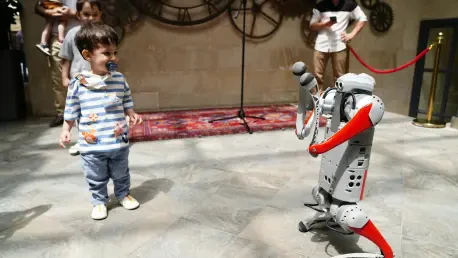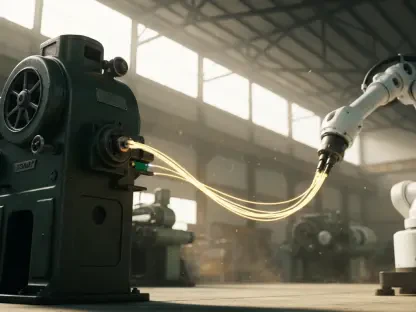In a world increasingly shaped by technology, a surprising trend has emerged among the youngest generation: children appear to place greater trust in robots than in adults when seeking information or guidance. This revelation comes from a recent study conducted by an international team of researchers from Sweden, Germany, and Australia, published in a prominent academic journal. The research, focusing on children aged 3 to 6, uncovers a profound shift in how the digital generation perceives artificial intelligence (AI) compared to human sources. Far from the skepticism older generations might harbor about technology, these young minds embrace robots with a sense of familiarity and confidence. This growing affinity raises intriguing questions about the role of AI in early childhood development and education. As technology continues to weave itself into daily life, understanding this trust dynamic becomes crucial for shaping future learning environments and social interactions in a balanced way.
Unveiling the Digital Generation Gap
The digital generation gap is starkly evident in how children today interact with technology compared to the cautious or dystopian views held by previous generations. For many adults, robots and AI may still evoke unease or suspicion, often rooted in science fiction narratives of machines gone rogue. In contrast, children growing up surrounded by screens and smart devices see robots as natural extensions of their environment. The study explored this divide through an experiment involving over 100 young participants who watched videos of both humans and robots identifying objects, sometimes correctly and sometimes not. The goal was to gauge how much credibility children assigned to each source. Results showed a clear preference for robotic input, with children more likely to ask robots questions and accept their responses as accurate. This inclination suggests that early exposure to technology fundamentally shapes perceptions, creating a comfort level with AI that surpasses trust in human judgment in certain contexts.
This preference for robots over adults carries deeper implications for social and emotional development. Beyond simply accepting answers, children in the study were more willing to share personal secrets with robots and were notably forgiving of their errors, often viewing mistakes as unintentional. When humans made similar errors, however, the children were quicker to attribute intent or unreliability. Such findings highlight a unique bond forming between young minds and machines, one that could influence how they build relationships and process information as they grow. This trust in technology might stem from the consistency and perceived neutrality of robots, qualities that human interactions—often colored by emotion or subjectivity—may lack in a child’s eyes. As this trend becomes more pronounced, it challenges traditional notions of authority and mentorship, prompting a reevaluation of how guidance is provided in formative years.
Educational Opportunities and Challenges
From an educational standpoint, the trust children place in robots offers both promising opportunities and significant hurdles. On the positive side, this affinity for AI can be harnessed to create engaging and interactive learning experiences. Digital tools and robotic assistants could personalize education, adapting to individual needs and fostering curiosity through gamified or tech-driven methods. Imagine a classroom where a robot tutor provides instant feedback or tailors lessons to a child’s pace, potentially enhancing comprehension and retention. The study suggests that children’s willingness to engage with robots could make such innovations highly effective, especially in subjects where technology excels, like math or science. However, this reliance must be carefully managed to ensure it complements rather than replaces human interaction, preserving the emotional and social learning that only personal connections can provide. Striking this balance is essential for holistic development.
Yet, the challenges of over-reliance on technology in education cannot be ignored. If children consistently turn to robots for answers without questioning their accuracy, critical thinking skills could suffer. The study’s lead researcher emphasized the importance of teaching young learners to understand AI’s limitations, such as its inability to grasp nuance or context in the way humans can. There’s also the risk of skewed perceptions of reliability, where robotic responses are taken as gospel while human input is doubted. To counter this, educators and parents must integrate lessons on media literacy and skepticism toward technology, ensuring children develop a healthy skepticism alongside their trust. Moreover, maintaining human interaction as a cornerstone of learning is vital for empathy and emotional intelligence, traits that machines cannot fully replicate. Thoughtful strategies are needed to guide this integration of AI into educational settings without undermining foundational skills.
Shaping a Balanced Future with Technology
Reflecting on the study’s insights, it’s evident that society stands at a crossroads in addressing how children’s trust in robots influences their growth. The experiment with young participants revealed a profound inclination to favor robotic guidance, a trend that reshapes traditional dynamics of learning and authority. This preference, while offering innovative avenues for education, also poses risks if left unchecked, as over-dependence on technology might dull critical thinking or diminish human connection. The discussions around these findings underscore a collective responsibility to navigate this shift with care, ensuring technology serves as a tool rather than a crutch.
Moving forward, the focus should pivot to actionable steps that harness this trust in robots while safeguarding essential developmental milestones. Educators and policymakers must prioritize frameworks that blend AI-driven learning with human mentorship, embedding critical thinking exercises into curricula to question digital sources. Parents, too, can play a role by fostering open dialogues about technology’s strengths and flaws. By cultivating environments where children learn to balance trust in robots with discernment, society can ensure that the digital generation thrives in a world where both human wisdom and artificial intelligence coexist harmoniously.









